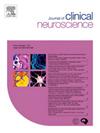Quality assessment of critical and non-critical domains of systematic reviews on artificial intelligence in gliomas using AMSTAR II: A systematic review
IF 1.9
4区 医学
Q3 CLINICAL NEUROLOGY
引用次数: 0
Abstract
Introduction
Gliomas are the most common primary malignant intraparenchymal brain tumors with a dismal prognosis. With growing advances in artificial intelligence, machine learning and deep learning models are being utilized for preoperative, intraoperative and postoperative neurological decision-making. We aimed to compile published literature in one format and evaluate the quality of level 1a evidence currently available.
Methodology
Using PRISMA guidelines, a comprehensive literature search was conducted within databases including Medline, Scopus, and Cochrane Library, and records with the application of artificial intelligence in glioma management were included. The AMSTAR 2 tool was used to assess the quality of systematic reviews and meta-analyses by two independent researchers.
Results
From 812 studies, 23 studies were included. AMSTAR II appraised most reviews as either low or critically low in quality. Most reviews failed to deliver in critical domains related to the exclusion of studies, appropriateness of meta-analytical methods, and assessment of publication bias. Similarly, compliance was lowest in non-critical areas related to study design selection and the disclosure of funding sources in individual records. Evidence is moderate to low in quality in reviews on multiple neuro-oncological applications, low quality in glioma diagnosis and individual molecular markers like MGMT promoter methylation status, IDH, and 1p19q identification, and critically low in tumor segmentation, glioma grading, and multiple molecular markers identification.
Conclusion
AMSTAR 2 is a robust tool to identify high-quality systematic reviews. There is a paucity of high-quality systematic reviews on the utility of artificial intelligence in glioma management, with some demonstrating critically low quality. Therefore, caution must be exercised when drawing inferences from these results.
求助全文
约1分钟内获得全文
求助全文
来源期刊

Journal of Clinical Neuroscience
医学-临床神经学
CiteScore
4.50
自引率
0.00%
发文量
402
审稿时长
40 days
期刊介绍:
This International journal, Journal of Clinical Neuroscience, publishes articles on clinical neurosurgery and neurology and the related neurosciences such as neuro-pathology, neuro-radiology, neuro-ophthalmology and neuro-physiology.
The journal has a broad International perspective, and emphasises the advances occurring in Asia, the Pacific Rim region, Europe and North America. The Journal acts as a focus for publication of major clinical and laboratory research, as well as publishing solicited manuscripts on specific subjects from experts, case reports and other information of interest to clinicians working in the clinical neurosciences.
 求助内容:
求助内容: 应助结果提醒方式:
应助结果提醒方式:


